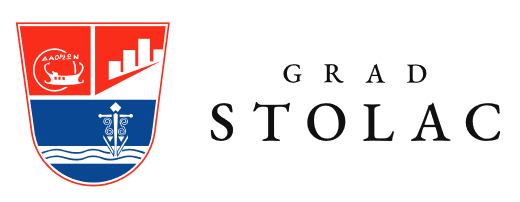Stolac is located in the southeastern part of Bosnia and Herzegovina, in the extreme east of Herzegovina-Neretva County. The city was built on the banks of the river Bregava, in the valley, and is surrounded by the mountains Hrgud and Vidovo polje; Križevac hill is almost in the center of the city and Krstac and Križane are also nearby.[1] To the east of Križevac is Komanje hill, Ošanići is to the west, Hrgud is to the north and Bacnik hill is to the south towards Hrasno and Neum.[2] The surrounding places are written with the pen of a rich cultural past. The very approach to Stolac from the western side is the Dubrava plateau, which is specific and famous for its peaches and, above all, the Dubrava vineyard for which Stolac's wines are known.
Climate
The climate is Mediterranean.[3] The storm reached speeds of up to 120 km/h in Stolac. The speed depends on the difference in temperature between Hrgud and Stolac and is exactly proportional: the greater the difference, the greater the speed.[4] The mean annual temperature is higher than 7 °C. Sunshine is 2,500 hours a year, an average of 6.4 hours a day.[5] The average annual cloud cover in Stolac is 4.5.[4]
Prehistory and antiquity
Drawing from Badanj cave
The Stolac area has attracted people since prehistoric times with its Mediterranean charm, good water, mild skies, gentle landscape and harmony of natural beauty. Illyrians and Greek sailors, Roman patricians, Eastern Gothic conquerors, Slavic dignitaries, Ottoman nobles, Venetian generals, Austro-Hungarian governors, and many devotees of the sun, the freshness of the Bregava River, cultural and historical values and secret messages from past centuries, left their mark here: castles and graves, names on plaques-messages for those who will come after them.
Stolac is an area with the longest and most luxurious history of urban life in Bosnia and Herzegovina, and it belongs to a small group of Balkan areas where material evidence of urban forms of life has been preserved for a period of over 3,500 years, which is the age of the last known finds of the Illyrian city of Daorson.
The continuity of the presence of the human community in the area of Stolac goes back 16,000 years. That there has been interest in living in this area since ancient times is evidenced by the places that surround it: the Badanj cave - a Paleolithic habitat, the fortified Illyrian city of Daorson, which inspires admiration with its cyclopean walls, and the famous stećak necropolises on Radimlja, Boljuni, Rotimlja and Vidoštak as well as the fortress of the Old Town itself. The Stolac area as a human habitat has existed continuously for 15,000 years. The name Stolac was given relatively late - the first known information is from the 15th century, and the development of Stolac can be traced through several names. The oldest name that we can record with certainty is Daorsoi, or Daorson, an Illyrian megalithic city in the village of Ošanjići above Stolac (IV-III centuries BC). Next comes the Roman municipium Diluntum, then castrum Vidoskij and loco dicto Stolaz, then Vidosich, Vidoski grad, Ottoman Ilce and IIstolce, then Vidoska and finally Stolac. Since the region is located in the Mediterranean climate, all kinds of fruit thrived, especially grapes.
Stolac was a city museum. The city with its historical heritage has been under the protection of UNESCO since 1980. Traces of human hands date back to 15,000 years ago, as evidenced by the drawings in Badanjska Pećina. These are descriptions of hunting details with a clear image of a horse (it is the Eneolithic era). The first inhabitants of the Balkans, the Illyrians, left their mark in the fortress Daorsonu, and the remains of the Roman fortress Diluntum were also found. There is also Radimlja with the famous stećak necropolis. There is also the grave of Jewish Rabbi Moše Danon in Krajšina. That place was and remains one of the Jewish sanctuaries, the second most important place of pilgrimage for Jews from all over the world.[8] Monuments, mosques, squares as well as churches, libraries were built during the Turkish rule. Later, the characteristics of the Mediterranean culture were added to these buildings.











